In this second blog on sugar, we’ll be clearing up the confusion around the many different types of sugar and sweeteners. Read on to become an expert on all things sweet!
Added Sugar vs. Natural Sugar: What’s the difference?
We briefly touched on the differences between added sugar and natural sugar in All About Sugar Part 1. Here are some helpful definitions and examples to break it down even further:
Added sugar: Sugar that is not naturally occurring in food but is added during processing or preparation. [1] The 2020-2025 Dietary Guidelines for Americans (DGA) recommend limiting added sugars to less than 10% of your daily calories. [2]
- Examples: Major sources of added sugars include sugar-sweetened beverages, desserts, sweetened coffee and tea, and candy. Other sources are jams, sweetened yogurts, and processed snacks like chips or kettle corn.
Natural sugar: Sugar that is naturally occurring in food. Foods containing natural sugar also tend to have important nutrients like vitamins and minerals. These foods also tend to have fiber, which slows down your body’s absorption of sugar.
- Examples: Fruits and vegetables are sources of natural sugar as well as fiber. Dairy products such as milk, yogurt, and cheese contain a natural sugar called lactose, but do not contain fiber.
Total sugar: Total sugar is made up of the added sugar plus the natural sugar in food. The nutrition facts label includes a separate line for added sugars. This helps shoppers see how much sugar was added to a food vs. how much sugar was in the product naturally. Looking at the amount of added sugar in a product is a healthy habit that can help you keep your daily intake below the recommendation!
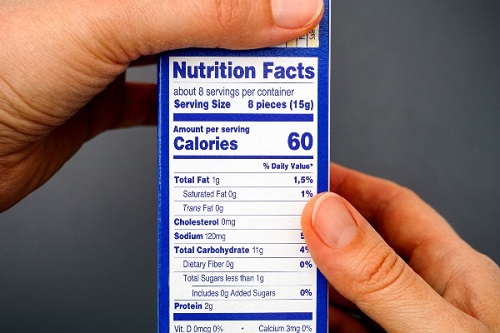
Sugar’s Many Different Names
When someone says the word “sugar,” most people think of white granulated sugar that you add to your morning coffee or your tea to make it sweet. But what about brown sugar? Artificial sweeteners? Or other foods like honey and agave? We cover all of these and more in the following list.
Note: Keep in mind that some foods can contain multiple forms of sugar at once!
Caloric sweeteners: Also known as nutritive sweeteners. These sweeteners have calories and provide energy in the form of carbohydrates. Examples of caloric sweeteners include:
- Sucrose: Also known as “table sugar.” Sucrose is found in the stem of a plant called sugarcane. Sugarcane must be harvested and then go through a series of processes in order for sugar crystals to be extracted. [3]
- Examples: Depending on how the sugarcane is processed, there are different forms of sucrose. These include raw sugar, granulated sugar, brown sugar, confectioner’s sugar, and turbinado sugar.

- Fructose: Sugar that is naturally present in fruit, vegetables, and honey. Fructose may be found in sodas and sweets in the form of high fructose corn syrup. [4]
- High fructose corn syrup (HFCS): A liquid mixture of glucose and fructose made from corn that is only available to food manufacturers. It is commonly used for its high level of sweetness and cheap cost. HFCS can be found in baked goods, soda, and some canned products. There is little evidence that HFCS affects the body any differently than other caloric sweeteners. However, experts say more long-term studies still need to be done before this can be known for sure. [5]
- Corn syrup: A sweet syrup made from corn. It has almost the same level of sweetness as high fructose corn syrup.
- Honey: A combination of fructose, glucose, and water. It is produced by bees. To learn more about honey, click here!
- Agave nectar: Agave nectar is about 1.5 times sweeter than regular sugar and has more calories per tablespoon than the same amount of table sugar. [6] Though it comes from a plant, agave nectar is not necessarily “healthier” than any other caloric sweetener.
- Invert sugar: A liquid sugar or syrup made from sucrose. It is used to keep candies and baked items sweet.
Non-caloric sweeteners: Also known as non-nutritive sweeteners, very low-calorie sweeteners, or artificial sweeteners. Compared to their caloric counterparts, non-caloric sweeteners are not actually sugar. Instead, they are zero- or low-calorie options. This is because they are not completely absorbed by your digestive system. They also tend to be much sweeter than sugar, so only small amounts are needed.
- Examples: The Food and Drug Administration (FDA) has approved the use of acesulfame-K, aspartame, neotame, saccharin, sucralose, and stevia. [7]

Let’s test your new sugar knowledge!
Now that you know more about the differences between types of sugar, try to apply what you’ve learned to these two activities.
What kind of sugars might these apples contain?
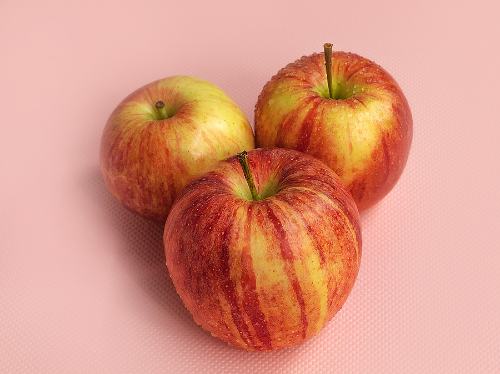
What about this bowl of cereal?
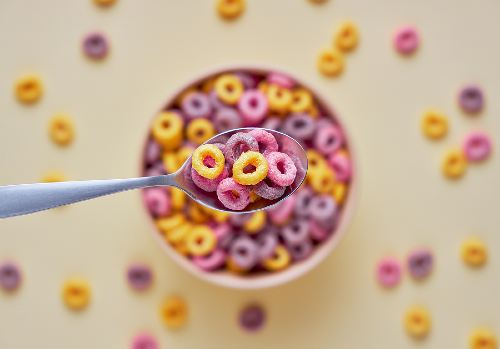
See if you can spot the different forms of sugar in this energy bar’s ingredients list.
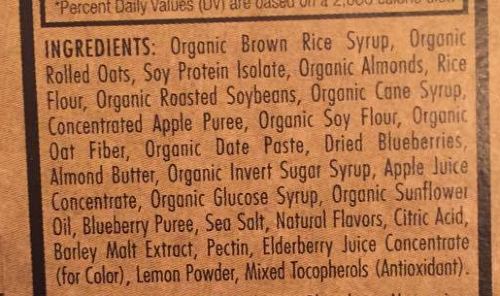
Answers for apple: (Fructose, a natural sugar)
Answers for cereal: (Lactose in the milk, a natural sugar; sucrose in the sweetened cereal, an added sugar)
Answers for ingredient label: (Organic cane syrup, organic invert sugar, organic glucose syrup, organic brown rice syrup. BONUS: Additional sweetening is also provided in the form of some concentrated fruit products containing natural sugars: concentrated apple puree, organic date paste, apple juice concentrate.)
Is there a “healthiest” sugar?
The short answer: no. But there are ways to enjoy sugar and maintain a healthy intake of the sweetener and its different forms!
As mentioned in All About Sugar Part 1, we should all be mindful of how much sugar we consume each day. However, we can make sure that we are making the smartest choice when it comes to enjoying sweet foods! Here are some things to keep in mind:
- The “best” sugar to choose is sugar contained naturally in foods. This is because these foods are also rich in nutrients and fiber. Focus on eating whole fruits and root vegetables like beets and carrots for these benefits.
- Non-caloric sweeteners can be used in place of caloric sweeteners to help reduce the number of calories you eat a day. It is important to note that experts do not agree on whether their use leads to weight loss or long-term weight maintenance. [3] [8]
- If you’re going to consume added sugars, whether from the sugar shaker or in processed foods, follow the 2020-2025 Dietary Guidelines for Americans and limit your added sugar intake to less than 10% of your total daily calories.
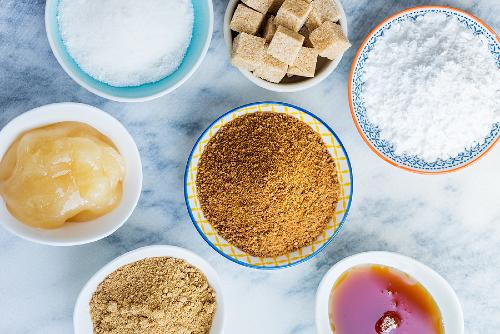
Sweet things should be enjoyed and there are healthy ways for us all to do so! We hope these blogs on sugar have been helpful, allowed you to learn new things, and that you will refer to them in the future.
Written by Taylor Newman, Ph.D., RDN, LD, and Darci Bell, RDN, LD | Reviewed by Leslie Davis, MS, RD, LD, CDCES, and the Nutrition Education Team
Posted: November 22, 2021
[2] Dietary Guidelines for Americans
[5] Journal of the Academy of Nutrition and Dietetics